Mantank
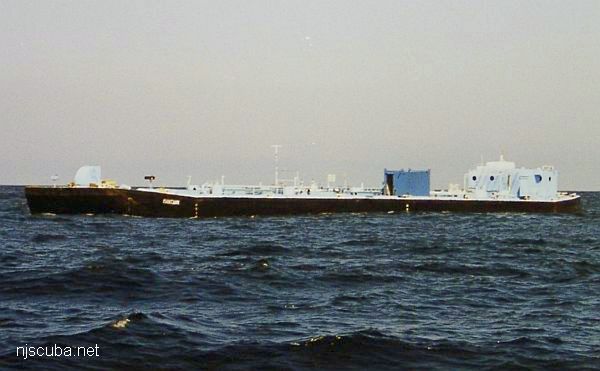
- Type:
- artificial reef, barge
- Built:
- 1950, Dravo Corporation, Wilmington, DE USA
- Specs:
- ( 224 x 38 ft ) 997 GT
- Sponsor:
- BassBarn.com, Ann E Clark Foundation, PSE&G Habitat Restoration Fund
- Sunk:
- Thursday Sept 5, 2002 - Deepwater Artificial Reef
- GPS:
- 39°58.688' -74°11.410'
- Depth:
- 120 ft
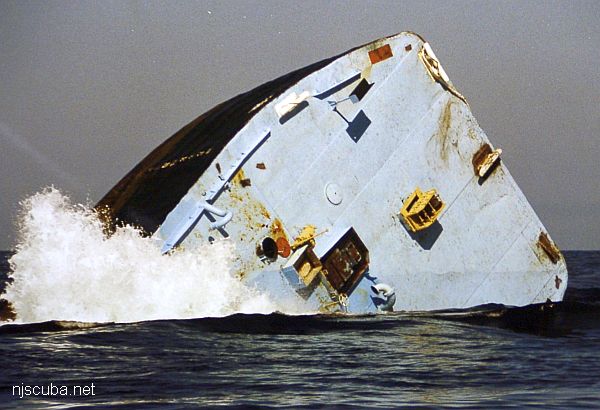
TANKER BECOMES FIRST SHIPWRECK
ON DEEPWATER REEF SITE
October 3, 2002
For more information contact:
Al Ivany at 609-984-1795
Last month, the New Jersey Department of Environmental Protection's (DEP) Division of Fish and Wildlife's Artificial Reef Program intentionally sank a 224-foot tanker barge. The tanker, now destined to become much-needed marine life habitat, rests on the seafloor of the Deepwater Reef Site located off Ocean City.
"This vessel will create valuable habitat for marine life, and offers to anglers and divers recreational opportunities for generations to come, " said DEP Commissioner Bradley M. Campbell. "In addition to the typical bottom fish such as sea bass, porgy, and fluke that inhabit shallow inshore reef sites, the Deepwater Reef will hold species that prefer deep, offshore waters like cod and pollock in the colder months, and bluefish, tuna, and sharks in the summer."
The Deepwater Reef is New Jersey's most offshore site and while more than 110 ships and barges have been sunk by the State on 13 of its ocean reef sites since 1984, this was the first vessel sunk here.
Funds to help offset the costs of preparation and towing were provided by Public Service Electric and Gas Company Habitat Restoration Fund, BassBarn.com, and the Ann E. Clark Foundation.
The sunken hull will be quickly colonized by fish and more than 150 other species of marine life. By next summer, this thriving marine community will provide new opportunities for anglers and scuba divers. The anticipated lifespan of this wreck is 75 to 100 years.
A tanker barge is a non-motorized barge that carries liquid cargo and is either pushed or pulled by a tug. This tanker barge was originally called "Mantank." It was built in Wilmington, Delaware in 1950 and was first owned by the Exxon Company. Its initial cargoes were petroleum and vegetable oil. Its final owner, K-Sea Transportation Corporation of Staten Island, donated the vessel to the State's Reef Program.
For over 10 years, the company used the tanker to deliver drinking water to ships in port, with the most notable customer being the Queen Elizabeth II. Since the Mantank had no engines or fuel tanks and carried clean water, it was relatively simple to prepare for sinking. Cleaning consisted of removing a pump, deck tank, and a small amount of floatable debris. It was then certified by the U.S. Coast Guard as acceptable for sinking as an ocean reef.
The vessel was towed by the tug "Taurus" from its berth in Staten Island to the Deepwater Reef, located 23 nautical miles offshore of Ocean City -- a trip that took more than 16 hours. Once anchored in position, four 6-inch valves were opened to allow for sinking. The tanker took 85 minutes to sink in water 120 feet deep.
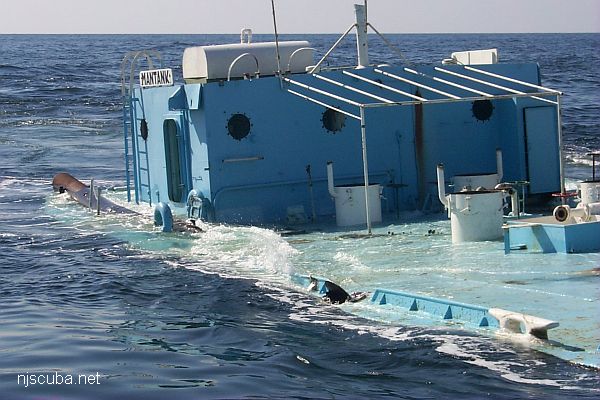
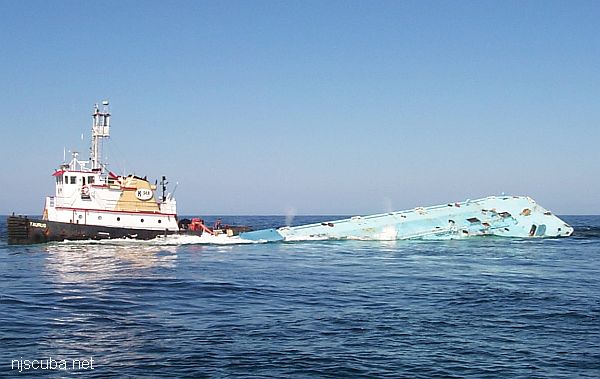
259598

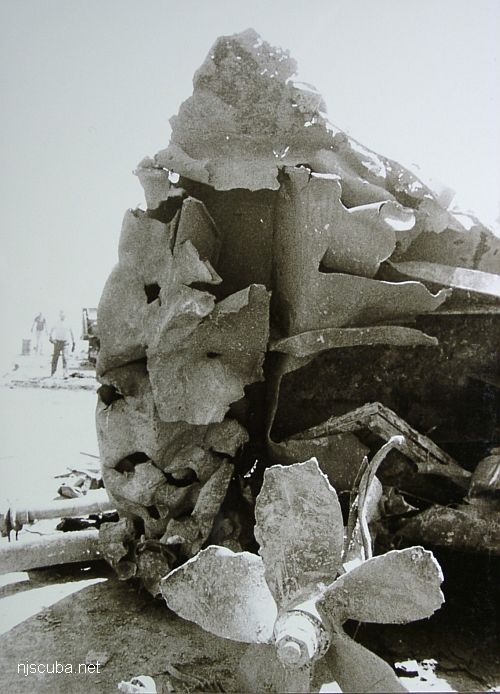
Questions or Inquiries?
Just want to say Hello? Sign the .